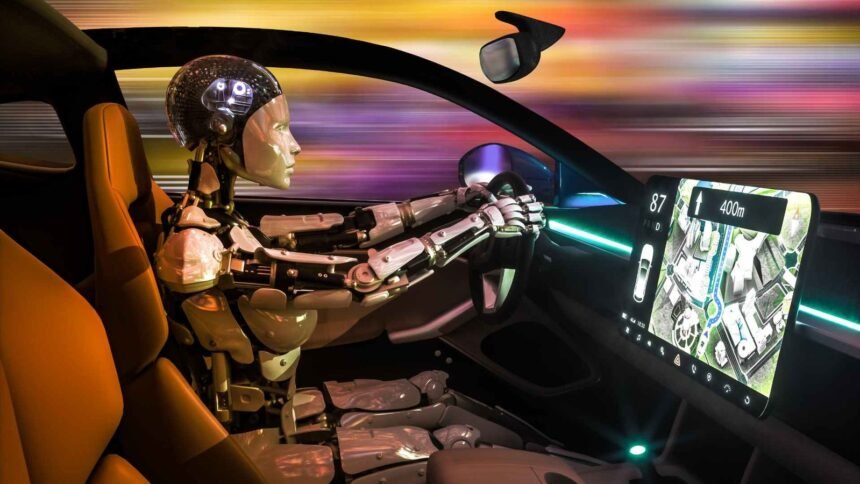Public transportation is the lifeline of urban areas, connecting millions to work, school, and social activities daily. Yet, traditional systems often struggle with traffic congestion, unpredictable passenger demand, and rigid schedules, leading to delays and frustrated commuters. Artificial intelligence (AI) is revolutionizing this landscape by offering innovative solutions to optimize routes and schedules. By leveraging vast amounts of data, AI makes public transportation more efficient, reliable, and passenger-friendly. The global AI in transportation market, valued at USD 2.3 billion in 2021, is projected to reach USD 14.79 billion by 2030, highlighting its growing significance Precedence Research.
How AI Optimizes Routes
AI enhances route planning by analyzing real-time and historical data to ensure vehicles take the most efficient paths. Using inputs from GPS, traffic cameras, and even social media, AI systems dynamically adjust routes to avoid congestion. For instance, if a bus encounters a traffic jam, AI can calculate an alternative route in seconds, minimizing delays.
Additionally, AI predicts passenger demand by examining patterns in historical data, weather conditions, and upcoming events. This allows transit agencies to allocate resources effectively. During peak hours or major events like concerts, AI can deploy extra buses or trains to high-demand routes, preventing overcrowding and improving passenger comfort. For example, AI can identify which routes will be busiest during a city marathon and adjust services accordingly.
| Route Optimization Features | Description |
| Real-Time Traffic Analysis | Uses GPS, cameras, and social media to avoid congestion. |
| Demand Prediction | Analyzes historical data, weather, and events to allocate vehicles. |
| Dynamic Rerouting | Adjusts routes instantly to minimize delays. |
How AI Optimizes Schedules
Fixed schedules often lead to inefficiencies, such as empty buses during off-peak hours or overcrowded ones during rush hour. AI introduces dynamic scheduling, adjusting departure times and frequencies based on real-time data. This ensures optimal resource use, reducing wait times and preventing underutilized vehicles.
For example, if a sudden surge in passengers occurs at a stop, AI can add more services to accommodate the demand. Conversely, during quiet periods, it can reduce service frequency to save fuel and operational costs. This flexibility enhances reliability and passenger satisfaction, as commuters experience shorter waits and less crowding.
Benefits of AI in Public Transportation
AI’s integration into public transportation yields significant advantages:
- Improved Efficiency: Optimized routes and schedules reduce operational costs and enhance service reliability. Transit agencies can better utilize their fleets, ensuring vehicles are deployed where needed most.
- Enhanced Passenger Experience: AI provides shorter wait times, accurate arrival predictions, and personalized travel suggestions. For instance, AI can learn a commuter’s habits and recommend the best routes.
- Environmental Benefits: By optimizing routes and schedules, AI reduces fuel consumption and emissions. It also supports electric vehicle adoption by managing charging schedules and battery usage, contributing to sustainability goals.
- Safety Improvements: AI-powered predictive maintenance analyzes vehicle sensor data to prevent mechanical failures, reducing breakdowns and ensuring safer journeys.
| Benefit | Impact |
| Efficiency | Lower costs, better fleet utilization. |
| Passenger Experience | Shorter waits, personalized services. |
| Environmental Sustainability | Reduced emissions and electric vehicle support. |
| Safety | Fewer breakdowns, safer travel. |
Case Studies: Real-World Applications
Several cities have successfully implemented AI to enhance their public transportation systems:
- Singapore’s Smart Nation Initiative: The Land Transport Authority (LTA) uses AI to analyze real-time data, optimizing bus and train routes to reduce congestion and travel times. By predicting demand and adjusting services, Singapore has improved its transit efficiency significantly.
- Los Angeles Metro: AI-powered predictive maintenance has reduced breakdowns and delays, improving bus and rail reliability. By analyzing sensor data, the system predicts potential failures, allowing proactive maintenance.
- City Mapper: This AI-driven app offers real-time route optimization for commuters in major cities. By analyzing traffic and transit schedules, it provides the fastest routes, enhancing the commuting experience.
Challenges and Limitations
Despite its potential, AI implementation in public transportation faces hurdles:
- Data Privacy and Security: Handling large datasets raises concerns about passenger privacy and data security. Robust cybersecurity measures are essential to protect sensitive information.
- Regulatory Compliance: Navigating complex regulations can be challenging, as different regions have varying rules on data usage and AI deployment.
- Infrastructure Investment: Implementing AI requires significant investment in technology and infrastructure, which may be a barrier for smaller transit agencies.
- Public Trust: Ensuring AI systems are transparent and unbiased is crucial for maintaining public confidence. Passengers need assurance that AI is used responsibly.
Future Prospects
The future of AI in public transportation is promising, with several exciting developments on the horizon:
- Autonomous Vehicles: Self-driving buses and trains could operate 24/7, reducing human error and improving accessibility. These vehicles will further optimize routes and schedules.
- Integrated Transportation Systems: AI will connect buses, trains, bikes, and ride-sharing into cohesive networks, making it easier for passengers to switch modes seamlessly.
- AI-Enhanced Infrastructure: Intelligent traffic signals, smart parking, and real-time traffic management will further reduce delays and optimize routes, creating smarter cities.
As AI technology advances, it will play a central role in shaping sustainable, efficient, and passenger-centric public transportation systems.
AI is transforming public transportation by optimizing routes and schedules and addressing challenges like congestion and inefficient scheduling. Through real-time data analysis, demand forecasting, and dynamic adjustments, AI enhances efficiency, reliability, and passenger satisfaction. While challenges such as data privacy and infrastructure costs remain, the benefits—cost savings, better passenger experiences, and environmental sustainability—are undeniable.






